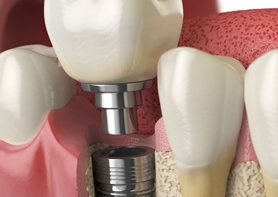You are here: Home » Insight hub » Case Studies » Lucideon Method Development Helps Nobel Biocare in Medical Device Optimization
Lucideon Method Development Helps Nobel Biocare in Medical Device Optimization
The Challenge
The chemical composition of implant surfaces plays an important role in promoting osseointegration between implants and the body.
Lucideon was approached by Nobel Biocare to characterize the surface chemical composition of medical implants to quantify the surface concentration of hydroxyl groups on the surface.
What We Delivered
To achieve this, a novel method needed to be developed since most surface science techniques cannot distinguish between different oxygen functional groups. In order to selectively and accurately quantify hydroxyl-groups only, the samples were chemically labelled using selected markers.
Samples were then cleaned and dried, and carefully handled to ensure minimal exposure to the lab atmosphere prior to analysis. Lucideon performed X-ray Photoelectron Spectroscopy (XPS) for the measurement.
Value to the Client
Using this method Nobel Biocare was able to determine the concentration of hydroxyl groups on the surface of implants. Being able to quantify hydroxyl groups allowed Nobel Biocare to compare the concentrations of implants that had undergone different processing techniques to clearly show that one method produced significantly greater hydroxyl group coverage. The findings were significant for informing product research and development of products that achieve better and faster osseointegration, which ultimately helps the patient.
This work is referenced in the Wiley article, ‘Rational design and in vitro characterization of novel dental implant and abutment surfaces for balancing clinical and biological needs’ which can be found here https://onlinelibrary.wiley.co...
